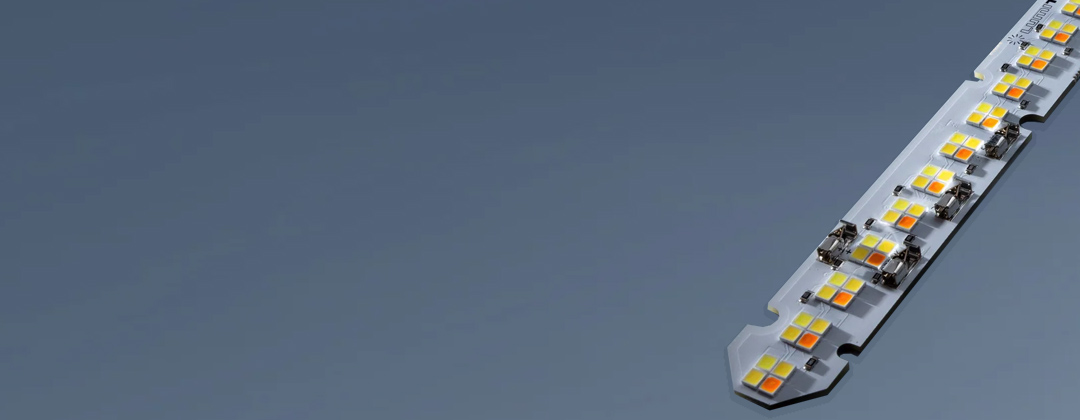Illuminating the Home: A Comprehensive Guide to Lighting and Recommended Light Levels
- By Ledrise Led Professional
- Apr 2, 2025

In the orchestration of a home’s ambiance and functionality, lighting plays a pivotal role. Beyond mere illumination, it shapes our moods, influences our productivity, and enhances the aesthetic appeal of our living spaces. Crafting an effective lighting scheme requires a nuanced understanding of light levels, color temperatures, and the specific needs of each room.
In this comprehensive guide, we will delve into the art of home lighting design, discussing the three levels of lighting, and providing room-specific recommendations to create the perfect ambiance in your living spaces.
Understanding Light Measurements
Before embarking on the journey of lighting design, it’s essential to grasp the fundamental units that define illumination:
•Lumens: This metric quantifies the total amount of visible light emitted by a source. Higher lumens indicate a brighter light output.
•Lux: Representing illuminance, lux measures the amount of light that falls on a surface. One lux equals one lumen per square meter. For context, a well-lit office typically maintains around 500 lux, while a cozy living room might have about 150 lux.
•Foot-Candles: Predominantly used in the United States, this unit is akin to lux but measures lumens per square foot. One foot-candle equals approximately 10.764 lux.
Embracing Layered Lighting
A well-conceived lighting design incorporates multiple layers to enhance functionality and ambiance:
•General Lighting: This foundational layer provides overall illumination, ensuring a uniform light level throughout the space.
•Task Lighting: Focused lighting addresses specific activities, offering higher illuminance where needed.
•Accent Lighting: Employed to highlight architectural features, artwork, or decorative elements, accent lighting adds depth and visual interest.
By combining the layers, the recommended average lighting level for each room or activity should be obtained:
| Home lighting recommended brightness | in Lux/m2 | in Lm/m2 | in Lm/ft2 |
| Living rooms general | 50-150 | 500 | 45 |
| Casual reading | 150 | 750 | 70 |
| Study | 150-750 | 750 | 70 |
| Bedroom general | 50-150 | 375 | 35 |
| Kitchen general | 150 | 375 | 35 |
| Kitchen working areas | 400 | 750 | 70 |
| Bathrooms | 150-300 | 500 | 35 |
| Halls and landings | 100-150 | 250 | 15 |
| Stairs | 100-150 | 250 | 15 |
| Dining rooms | 150-450 | 500 | 45 |
The Layers of Lighting in detail
As each of the layers of lighting has a distinct purpose and contribution to the overall atmosphere and functionality of a room, these insights and recommendations will help you create a harmonious and well-lit environment.
1. General Lighting:
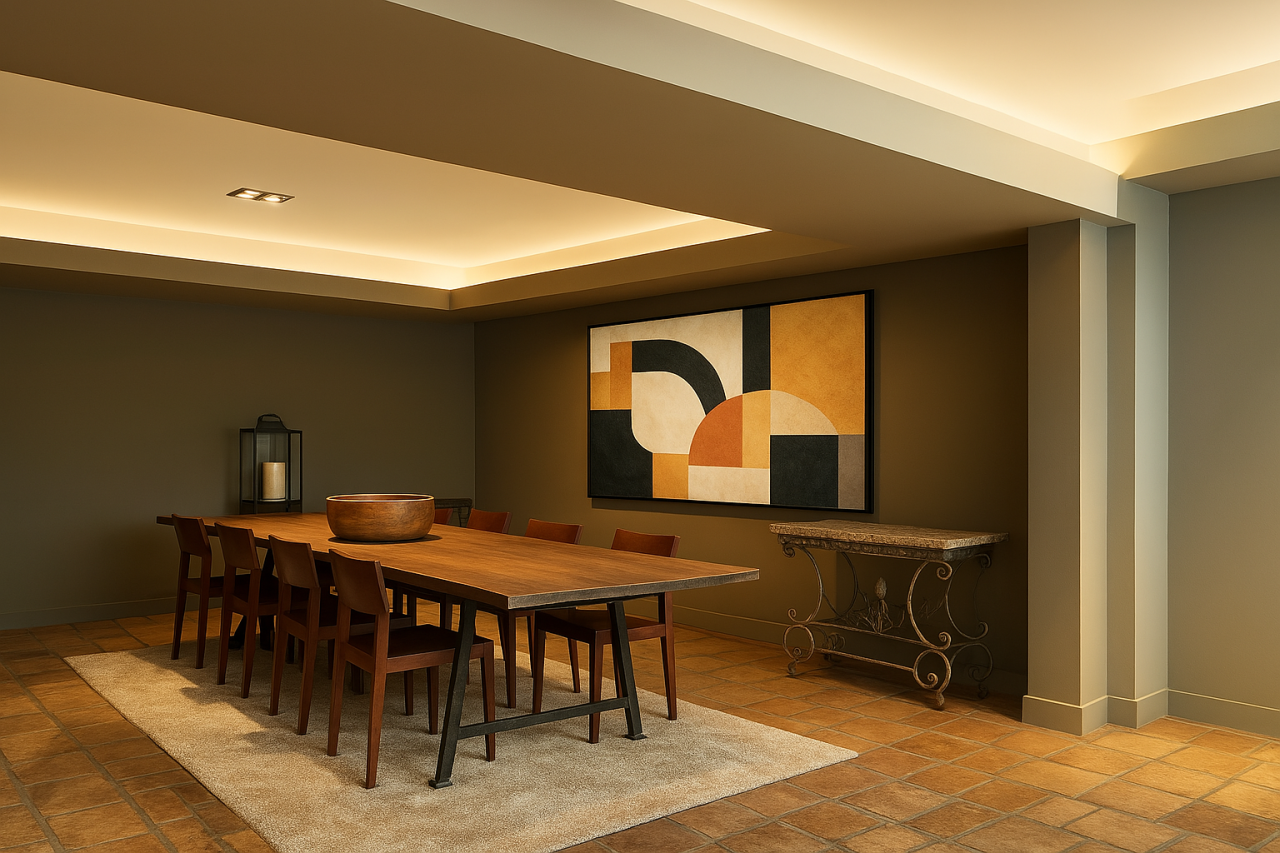
General lighting provides a sufficient minimum level of light in the room, ensuring safe movement and overall well-being. LED light sources, such as modules, strips, luminaries, or spotlights, are ideal for this purpose. When designing general lighting, consider the desired illuminance level (lux) and provide flexibility through control settings or dimmers. This flexibility allows occupants to raise or lower the general lighting according to their preferences.
In living rooms and bedrooms, it is essential to accommodate the needs of elderly occupants, who generally appreciate a higher level of general lighting. Sufficient general LED lighting contributes to the overall comfort and safety of the home, particularly in areas such as staircases.
Linear LED Strips & Modules for General Lighting
Our range of customizable MultiBar or LumiFlex LED strips feature Nichia LEDs that can deliver the high light output required for general lighting. Manufactured at our state-of-the-art facility in Germany, these LED systems embody precision and innovation. Utilizing Nichia advanced LED technology, you can bring your ideas to life with exceptional light quality and performance.
2. Task Lighting:
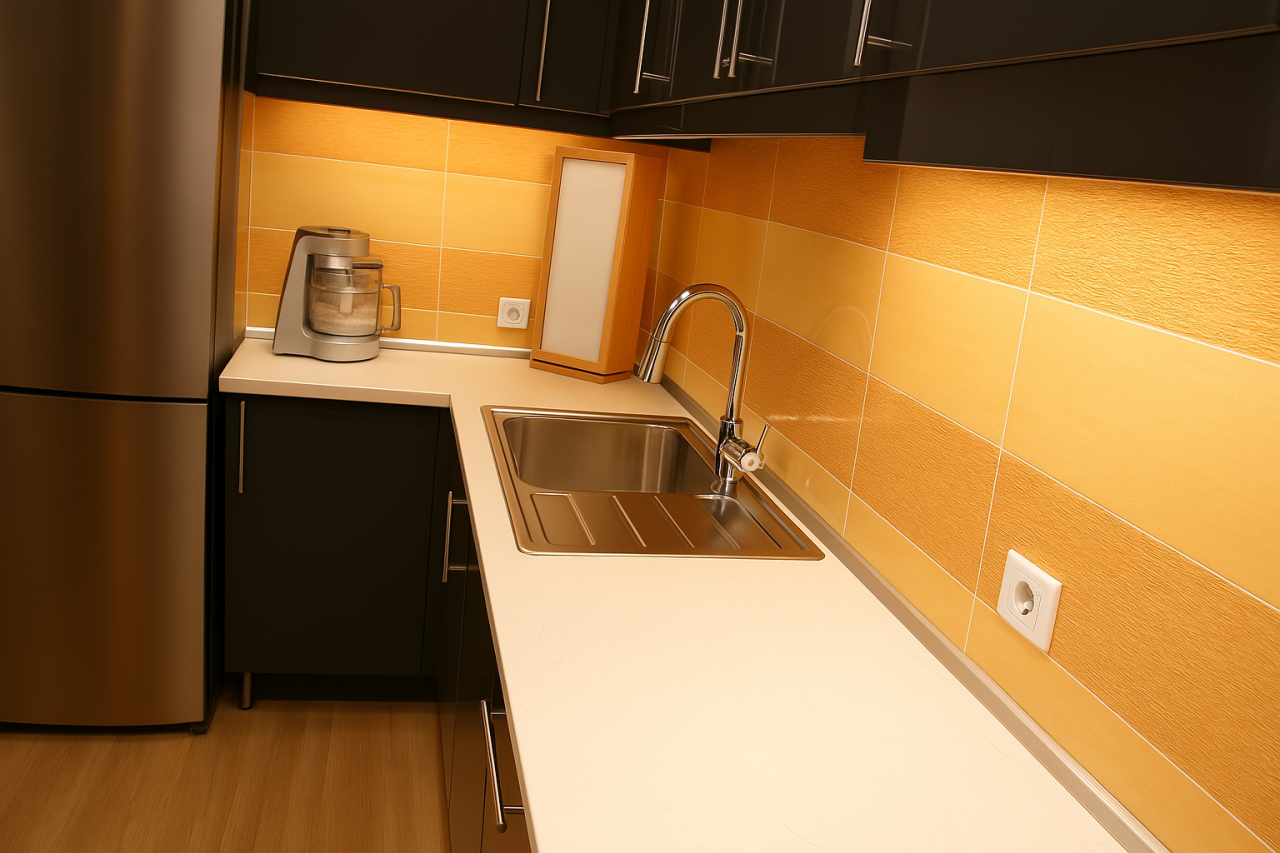
Task lighting is essential for specific activities at home, including dining, reading, preparing food, and working. When designing task lighting, carefully select and position LED lamps, and ensure proper control. High flux LED modules and LED spotlights are recommended for this purpose. It is crucial to have lamps or sockets in the right places to provide flexibility in task and accent lighting availability.
The color rendering of the light is also critical for some activities, and we recommend LED lights with a color rendering index (CRI) of 98 or more to ensure accurate color representation.
LED Strips for Task Lighting
The customizable MaxLine or LumiBar LED strips feature tightly spaced Nichia LEDs that can provide the very high luminous flux for task lighting. Made at our state-of-the-art facility in Germany, these LED strips embody precision with Nichia advanced LED technology, can meet the highest of project standards for light quality and performance.
3. Accent Lighting:
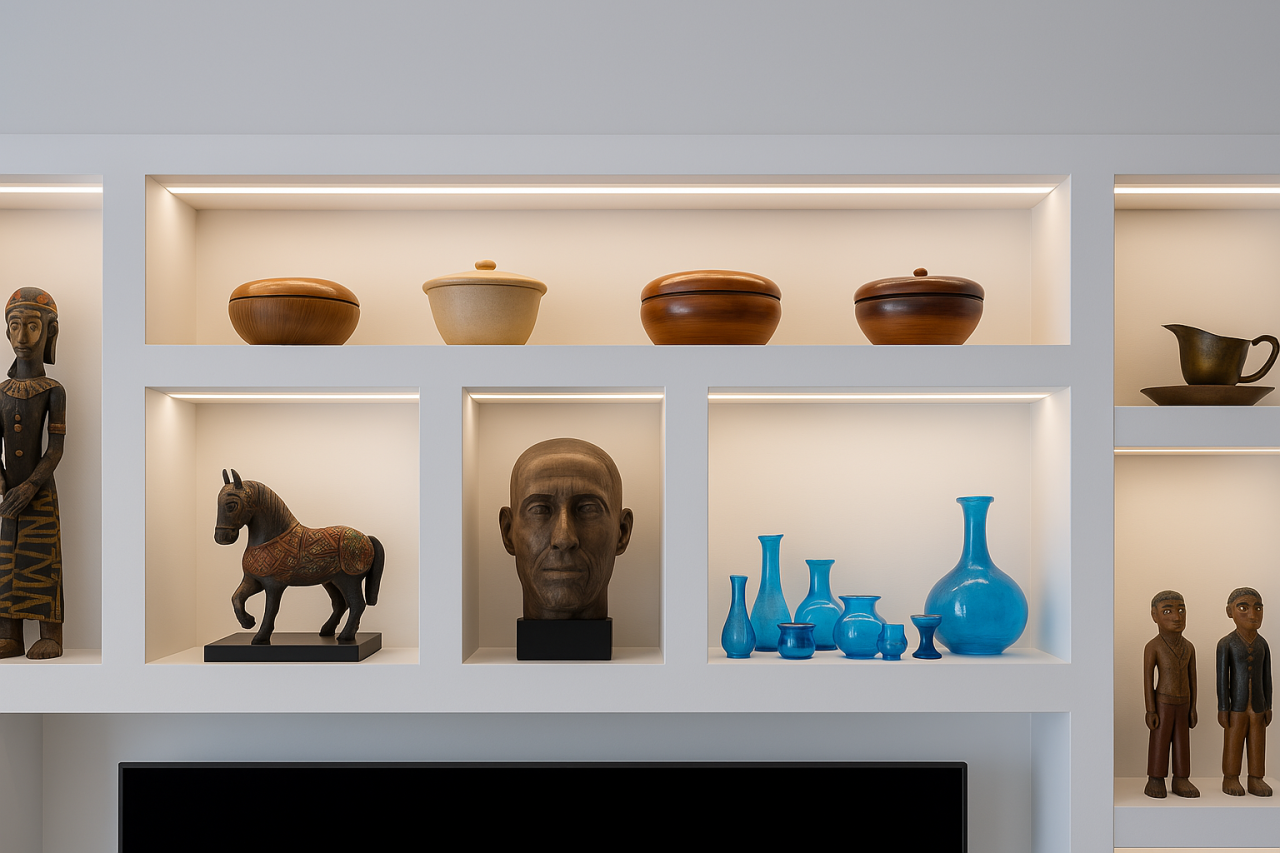
Accent lighting enhances the ambiance of a home by emphasizing architectural features, furniture, and ornaments. Typically done with LED strips and spots, accent lighting adds a personal touch to the space. Depending on the circumstances, spotlighting or floodlighting may be used to create the desired effect.
For each level of lighting, controls can offer a range of lighting options, allowing occupants to customize the atmosphere in each room. For instance, in a living room, separate controlled circuits can be designed for general, task, and accent lighting. Similar control patterns can be applied in other rooms, with dimmers providing different lighting atmospheres in salons, dining rooms, and bedrooms.
Advanced controls, such as mobile phone or tablet apps, enable remote adjustment of light intensity and color, and are becoming increasingly popular. Lighting has evolved into a lifestyle statement, and homes with innovative lighting systems are perceived as having a marketing advantage.
LED Strips for Accent Lighting
The 3-channel LumiBar can create dynamic lighting effects with white or color Nichia LEDs suitable for all lighting accent needs. With the MultiBar LED system, the installation is made easy and very affordable, thanks to the plug & play system. Built at our state-of-the-art facility in Germany, these LED strips use Nichia advanced LED technology to deliver perfect accent lighting.
500x10 mm LED strip, Plug & Play System
White LEDs 1800-7800K, CRI80-99
24V Constant Voltage
Room-by-Room Lighting Recommendations
Lighting plays a pivotal role in creating a cozy and functional atmosphere in your home. A carefully designed home lighting system ensures the appropriate amount of light is available when and where needed, while also offering control and flexibility to create different lighting effects for various situations. Let's delve into the art of home lighting design, providing room-specific recommendations to create the perfect ambiance in your living spaces.
Living rooms
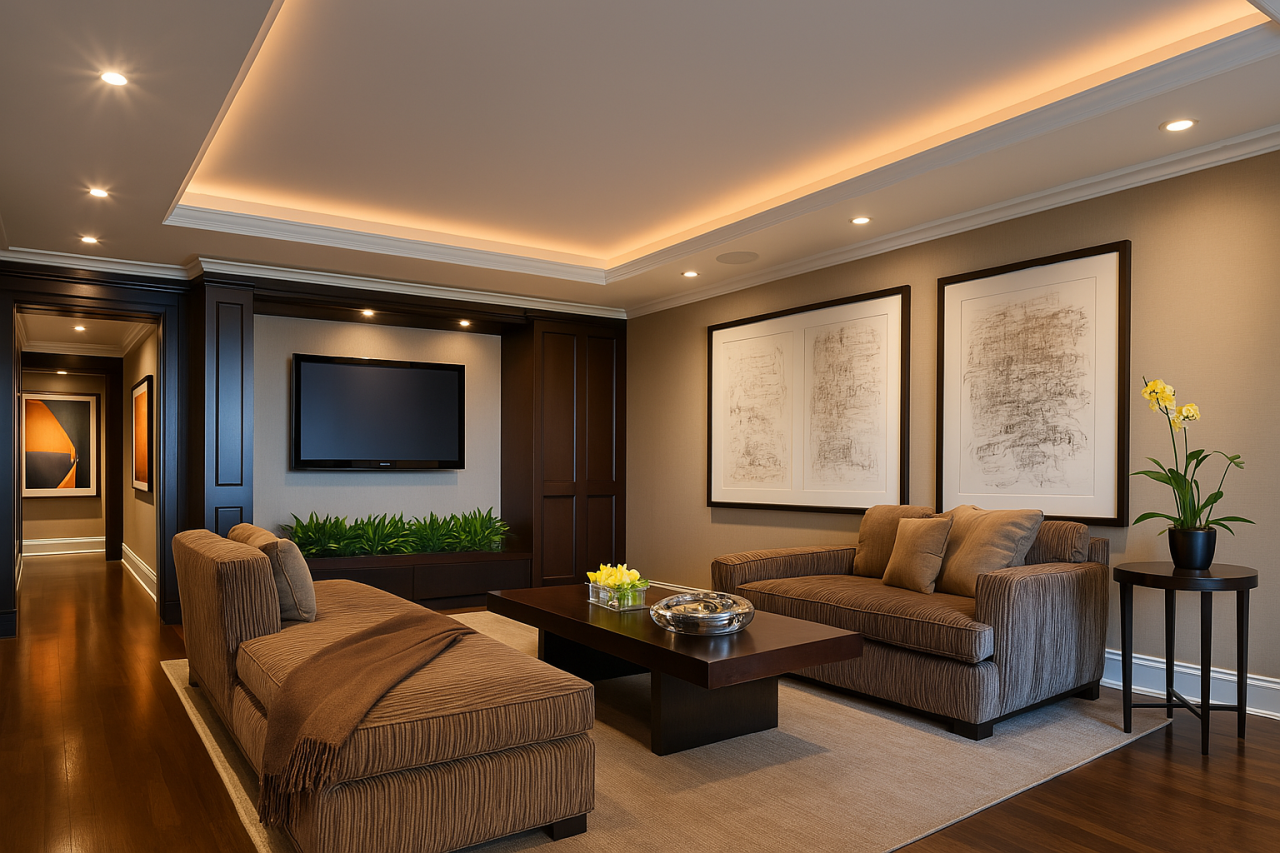
Living rooms require a relaxed atmosphere and flexibility in terms of lighting levels and positions. Aim for floor lighting that can be adjusted between 100-150 lux and easily reduced to a dimmer value of approximately 50 lux. This may require various light sources, such as:
- General light: Obtainable with LED cove lights, a central LED fixture (pendant or ceiling lamp) or an array of spotlights.
- Task lighting: Achieved with spotlights or linear LED lights.
- Ambient lighting: LED cove lights, and wall luminaires that offer glare prevention.
Long-lasting LED lighting leads to significant energy and cost savings compared to CFLs. Good ambient lighting can be complemented by portable luminaires like table lamps or floor lamps that provide the higher local illuminance required for reading or other detailed activities.
Dining rooms
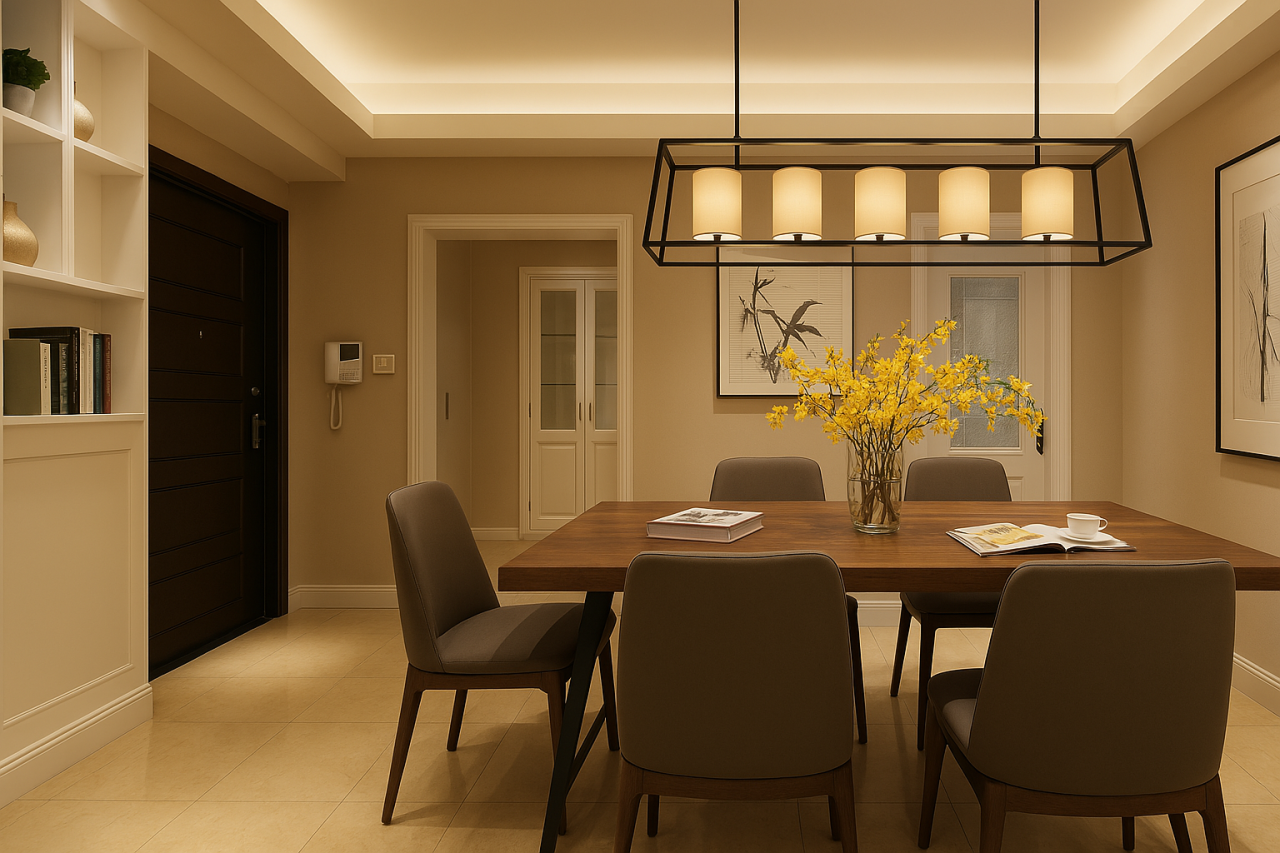
Lighting can be used to create different moods in dining rooms. A wash of light over one wall or the ceiling from an LED strip inside a cove light can provide a background level of lighting. Portable luminaires such as table lamps can achieve various lighting effects against this backdrop. Dining room lighting should have a color temperature within the limits of 2,700K-3,000K and provide about 150 lux at floor level.
Dining room tables are often used for various activities besides dining. Flexibility in lighting for the dining tabletop is recommended: it should be possible to provide 150-200 lux for dining and 400-500 lux for situations when the table is used for other tasks, such as homework and hobbies. Dining room lighting should have excellent color rendering, at least CRI 98.
Bedrooms and Lounges
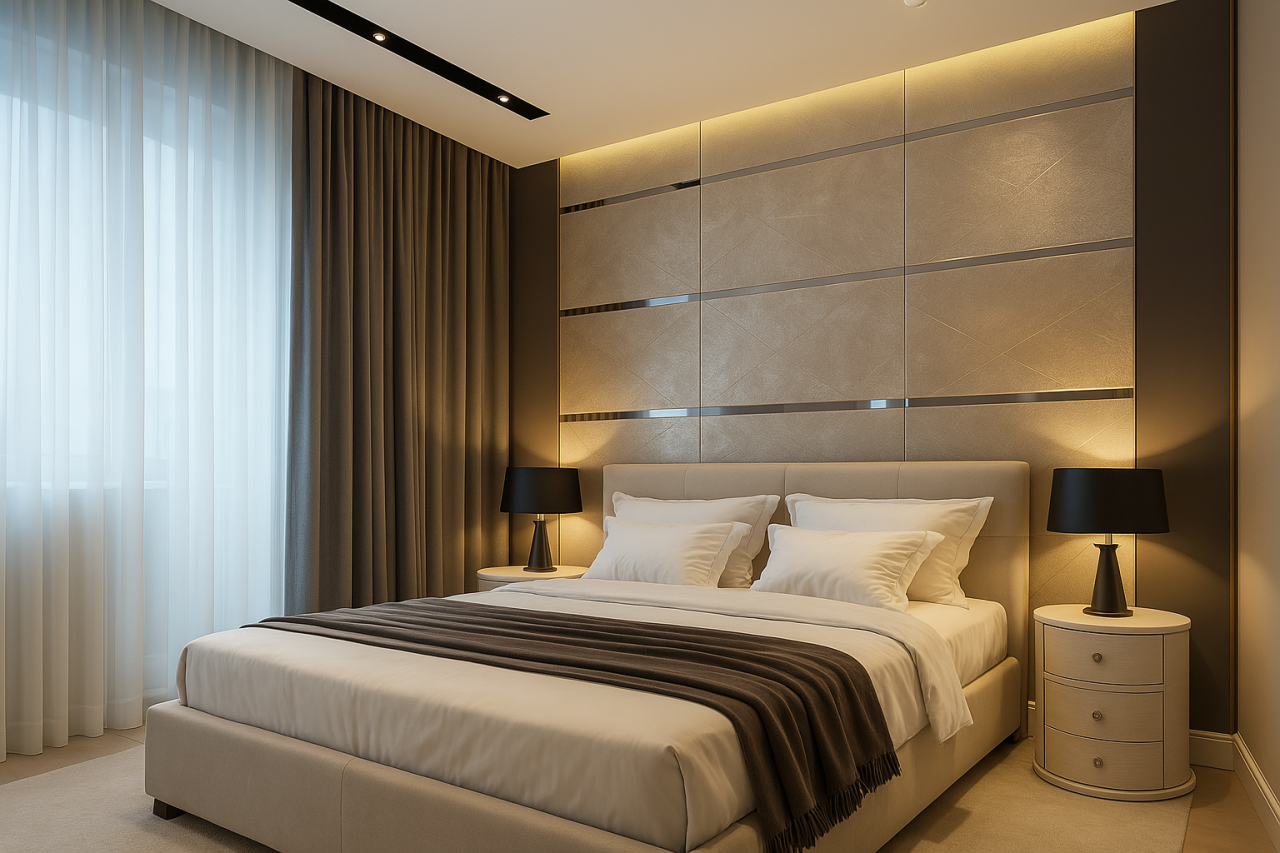
Bedrooms and lounges are private spaces for rest and relaxation, and lighting should be designed to create a soothing atmosphere while providing enough illumination for tasks such as reading or getting dressed.
Bedrooms are best lit with indirect light from bright LED strips inside cove lights or LED spotlights that direct light onto wall surfaces, both approaches aimed at reducing glare while providing good general light levels.
Provide a separate circuit specifically for bedside lighting, with lighting socket outlets and two-way switching to help ensure lights are not left on unnecessarily. Bedside lamps or wall-mounted fixtures should offer focused illumination for reading or other tasks, with easy access to switches. Lighting levels in bedrooms should be controllable, with flexibility to provide subdued levels of 50-100 lux at floor level and a maximum of about 150 lux. Dimmer switches or smart lighting systems can be used to adjust the intensity of light according to preference and activity.
There should be provision of good task lighting for activities such as reading, offering focused illumination of up to 400 lux. Adjustable desk lamps or wall-mounted fixtures can be used for this purpose.
Good color rendering is an important consideration in bedrooms to help in the choice of clothes, for example. Opt for fixtures with a CRI of at least 90 to ensure accurate color representation.
Studies and Home offices
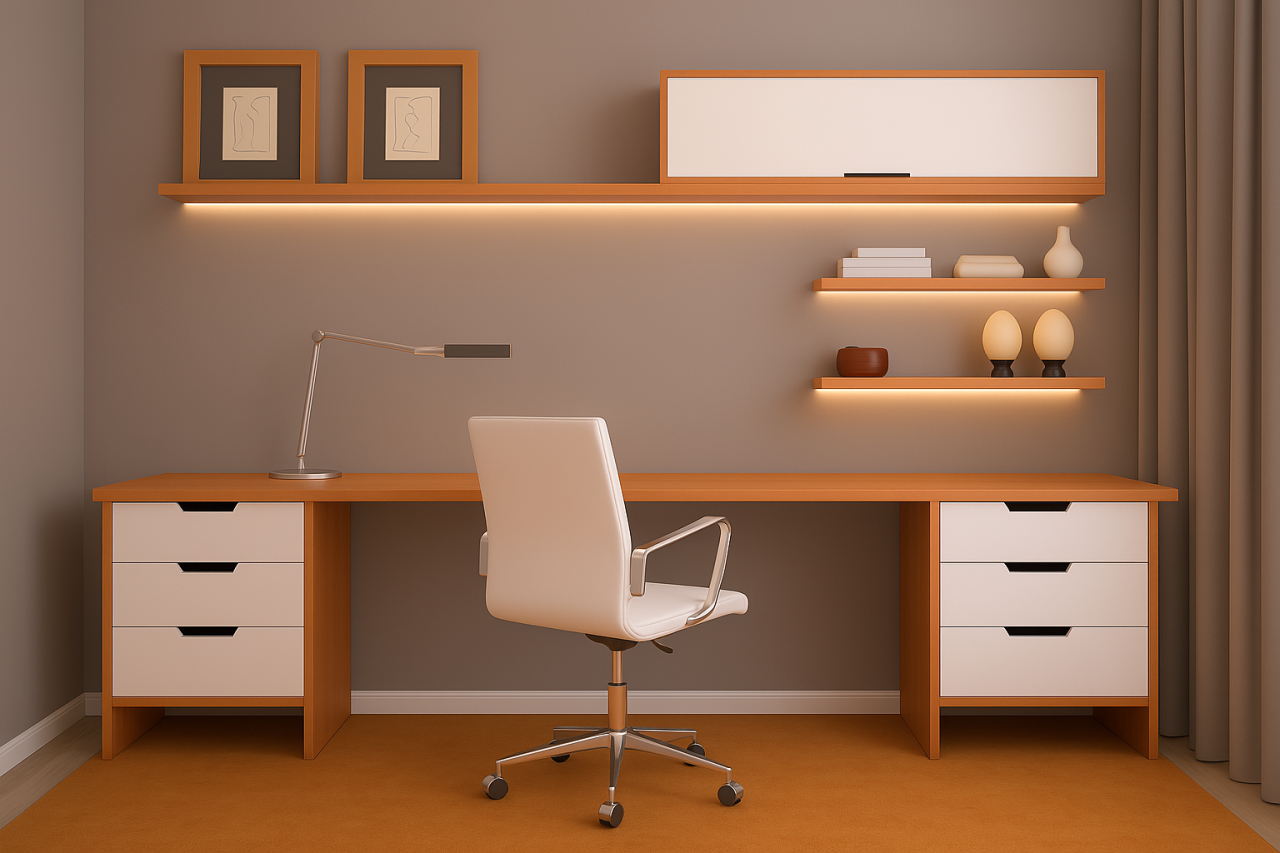
Lighting in studies and home offices should promote focus and productivity, while minimizing eye strain and fatigue.
Arrange diffuse background lighting to prevent harsh lighting that creates glare on computer screens and paper-covered desks. LED cove lights or dedicated wall up lights can be used to create a general wash of light. Task lighting can be provided by using LED desk lamps. Studies and home offices require good levels of lighting, with between 400 and 500 lux for task lighting on desks. If more intricate work is being undertaken, we recommend 750 lux.
Kitchens and Work areas
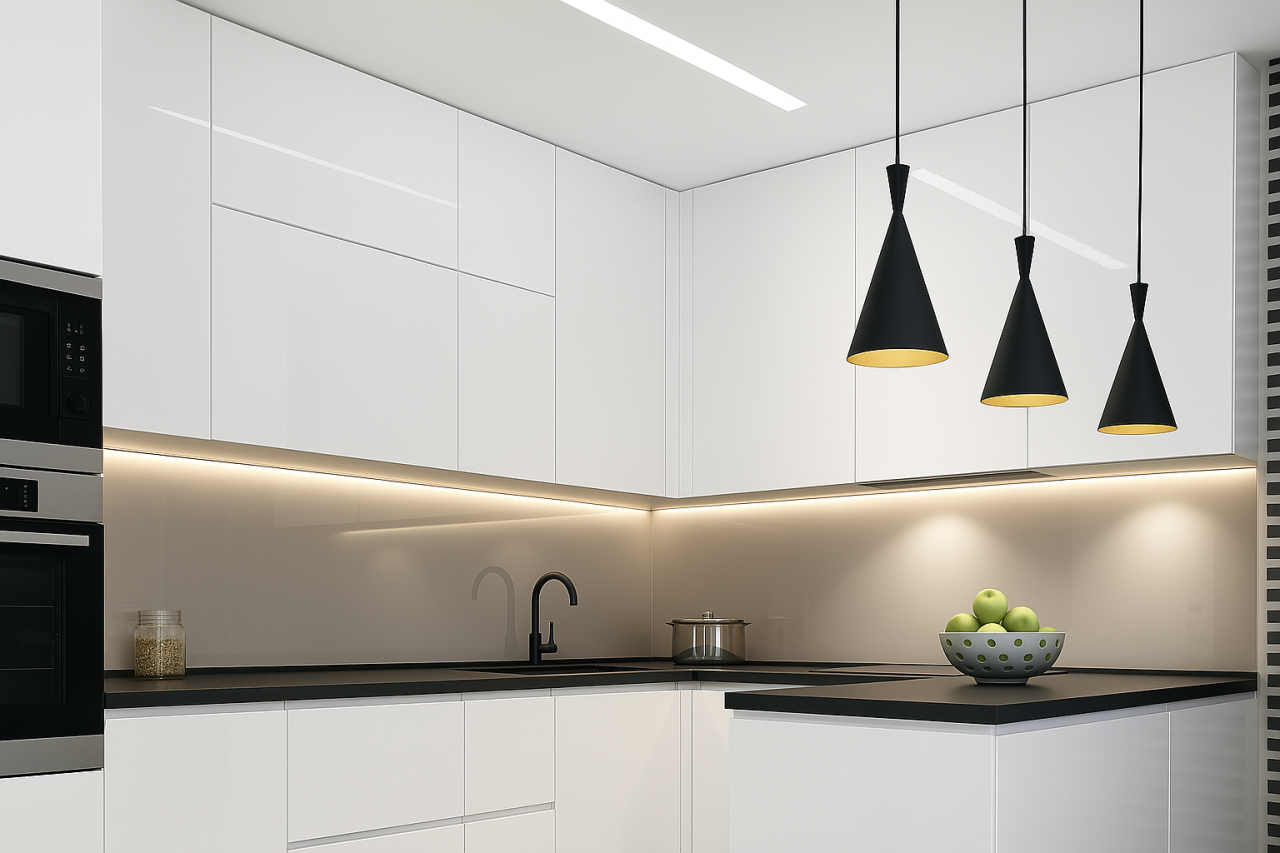
In kitchens and work areas, the detailed tasks being carried out require high levels of lighting, particularly because of the use of sharp tools. A lighting level of at least 400 lux should be on the worktop, hob, and sink levels and is best obtained with LED strips or modules placed under the cupboards, lighting downwards. We recommend you choose LEDs with CRI at least 98, as high-quality light can make food look best and can influence how we experience its taste. For kitchen floors, appropriate luminance levels are 150-200 lux for floors from light sources such as a central LED luminaire or an array of LED spotlights.
It is important to ensure that the lighting in the kitchen is well-distributed to avoid creating dark spots or shadows that can make it difficult to work effectively. Using a combination of overhead lighting and under-cabinet lighting can help to ensure that the entire kitchen is well-lit. It is also important to consider the color temperature of the lighting in the kitchen, as this can impact the perceived color of food. A color temperature in the range of 2,700K-3,000K is recommended for kitchen lighting.
Bathrooms and Hallways
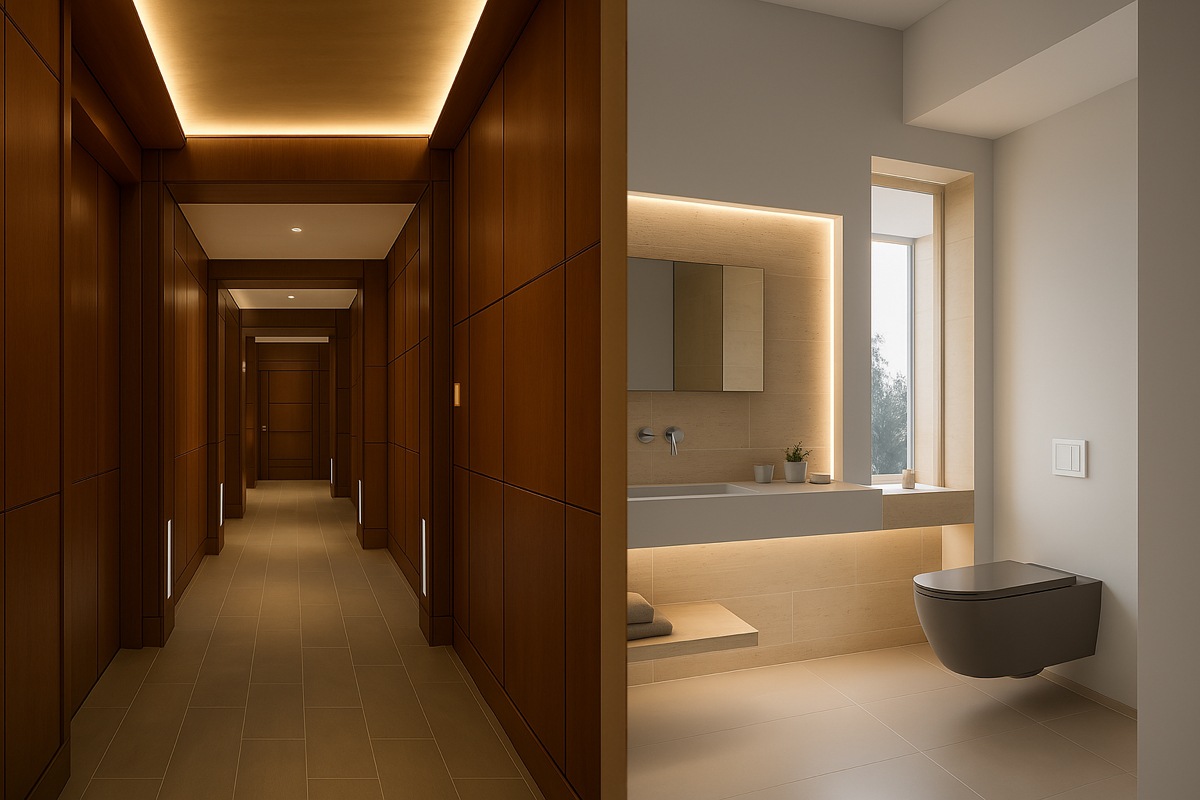
LED downlights are particularly suitable for bathroom lighting where they can be positioned to provide lighting where it is needed, for example over the bath and shower. Aim for good task lighting levels around bathroom mirrors and illumination levels of 250-300 lux for bathroom floors. When specifying bathroom lighting, take care to check how far from a water source it can be fitted. A bathroom is divided into zones 0 to 3, each requiring a respective waterproof level (IP protection). Choose only bathroom lighting with the appropriate IP protection level for the zone in which it will be used. It is recommended that general bathroom lighting and task lighting (e.g. lighting for mirrors) are on separate circuits.
For hallways, LED cove lights can maximize headroom in what is often a small area and down lighting is often the most appropriate solution. Since hallways are often lit for long periods, the use of long life LED lighting will maximize energy savings. A lux level of between 100-150 is recommended at floor level.
As in the case of hallways, flush fittings are useful when headroom is limited. To provide adequate lighting, stairs may require luminaires either along them, above them, or in proximity on the landing. To avoid falls on stairs, lighting should be operated by two-way switching situated at both the top and the bottom of flights. Lighting should be positioned to ensure that stairs are easily visible (by providing contrast in lighting between treads and risers). The ideal color temperature for lighting on stairs and landings is around 3,000K and lighting for stair treads should be at least 100 lux. Lighting on stairs and landings (including daylight as well as artificial light) should be designed to minimize glare.
Factors Influencing Lighting Design
Several elements can impact the effectiveness of your lighting plan:
•Ceiling Height: Higher ceilings may necessitate fixtures with higher lumen outputs or the incorporation of additional light sources to achieve desired illuminance levels.
•Wall Colors and Finishes: Light-colored walls reflect more light, potentially reducing the need for high-output fixtures. Conversely, dark hues absorb light, requiring enhanced illumination to achieve the same brightness perception.
•Glare and Shadows: Position fixtures to minimize glare and eliminate harsh shadows. Utilizing diffusers or selecting fixtures with appropriate shielding can contribute to a more comfortable lighting environment.
The Impact of Lighting on Well-being
Beyond aesthetics, lighting significantly influences our circadian rhythms and overall health. Exposure to natural light during the day and minimizing blue light exposure in the evening can enhance sleep quality and mood. Incorporating dimmable fixtures and selecting appropriate color temperatures can help align indoor lighting with natural patterns, promoting well-being.
Thoughtful lighting design transcends mere functionality, crafting spaces that are both beautiful and conducive to the activities they host. By understanding the principles of illuminance, color temperature, and layering, and by tailoring lighting choices to the specific needs of each room, homeowners can create environments that are inviting, efficient, and harmonious.




